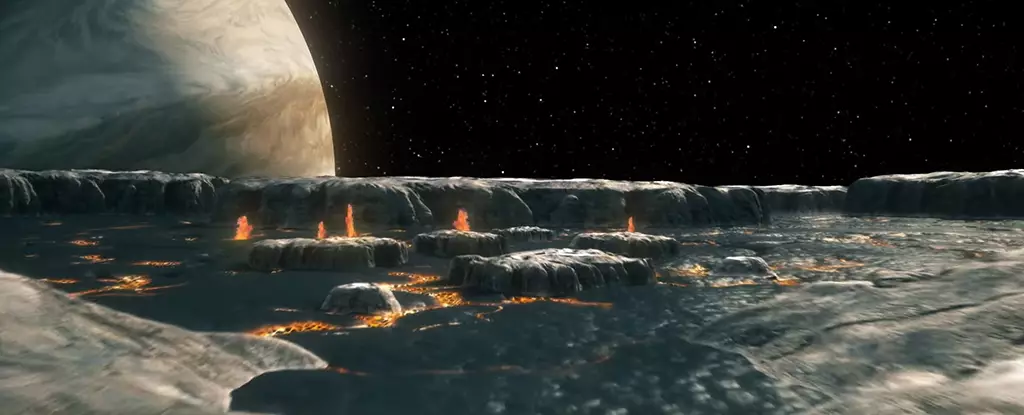As the most volcanically active body in our Solar System, Jupiter’s moon Io has long captured the interest of planetary scientists and astronomers alike. With an astonishing 400 volcanoes and vast stretches of lava flows, Io’s surface is a testament to relentless geological activity. However, new revelations challenge our foundational understanding of this intriguing moon. Instead of a sprawling magma ocean powering its voluminous eruptions, recent research highlights a more localized source of magma, reshaping our theories on volcanic mechanics in celestial bodies.
NASA’s Juno spacecraft has ushered in a new era of exploration for Io. Utilizing both cutting-edge imaging and gravitational measurements, a collaborative international team of researchers has unveiled compelling insights into the moon’s interior dynamics. Their findings suggest that instead of a global ocean of molten rock lying beneath the surface, Io is characterized by scattered magma chambers. This revelation fundamentally alters the long-held assumption that a vast magma reservoir underpinned all volcanic activity.
The significance of this discovery lies not only in its implications for Io itself but also in how we understand volcanic processes across other celestial bodies. It challenges the notion that a molten substrate is a prerequisite for sustaining active volcanism, inviting a broader examination of geological processes throughout the Solar System.
One of the primary mechanisms responsible for Io’s intense geological activity is tidal flexing. As it orbits Jupiter, Io is subjected to tremendous gravitational forces that induce constant deformation of its shape. This phenomenon creates significant internal heat, leading to volcanic eruptions that can be massive in scale. Despite the energy generated from such flexing, the latest study indicates that the expected gravitational signatures associated with a global magma ocean do not align with observed data.
Scott Bolton, a prominent space physicist involved in the research, emphasizes that the magnitude of tidal deformations should have indicated a more extensive molten layer if a global magma ocean existed. The research indicates Io possesses a rigid, primarily solid mantle, thereby challenging previous hypotheses regarding the internal composition of this dynamic moon.
The re-evaluation of Io’s geological framework has broader implications for our understanding of planetary formation and evolution. The assumption that many celestial bodies, especially during their early formation, possess substantial magma oceans has underpinned much of our planetary science. Io’s case invites scientists to reconsider this paradigm, suggesting varying internal structures may exist even among increasingly similar-looking bodies.
Moreover, the differences in tidal flexing across other moons and planets create opportunities for understanding how these forces contribute to geological activity. This can provide insights into the conditions that lead to habitability or the potential for life on worlds beyond our own.
The findings derived from Io are not merely confined to this volcanic moon. They offer valuable context for understanding other celestial bodies, such as the icy moons of Saturn, Enceladus and Europa, renowned for their own geological activity. By analyzing the varying degrees of tidal flexing and internal structures, researchers can refine their models of planetary geology, aiding in the search for extraterrestrial life.
Furthermore, these insights extend even to exoplanets. As we venture further into the study of planets beyond our Solar System, the knowledge gleaned from Io’s volcanic processes can illuminate the characteristics that might be present in different planetary environments, including super-Earths. Exploring how internal dynamics manifest across diverse planetary landscapes could help tailor future missions focused on habitability.
While Io stands as a beacon of volcanic activity, the latest research demands a shift in how we perceive not only this moon, but also larger questions regarding planetary composition and evolution. With Juno’s valuable data catalyzing a new understanding, researchers are prompted to question longstanding theories and explore the complexities of geological processes across the cosmos. As we continue to unlock these mysteries, our appreciation of the dynamic universe we inhabit will inevitably deepen, pushing the boundaries of scientific inquiry into new realms.


Leave a Reply